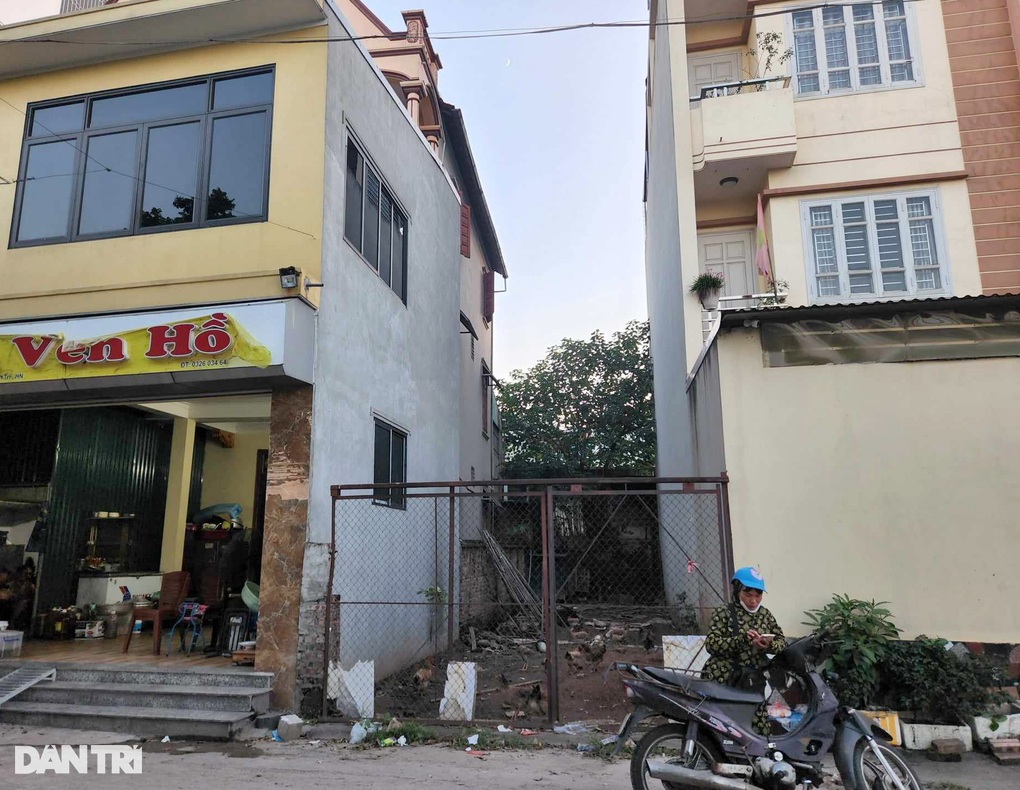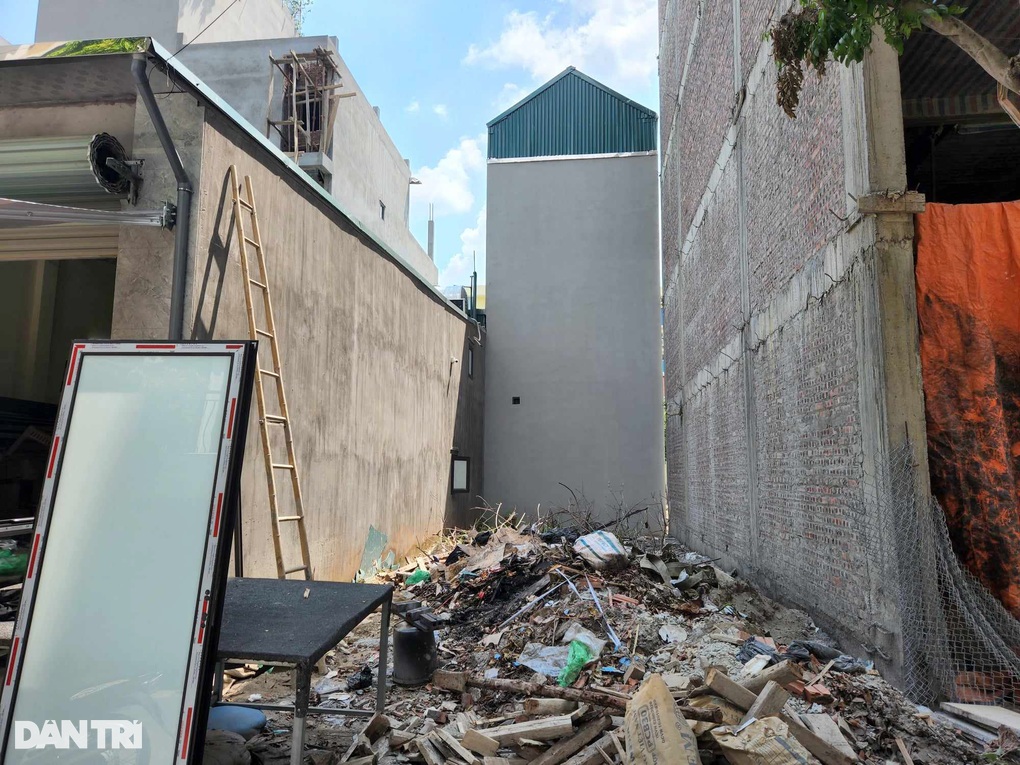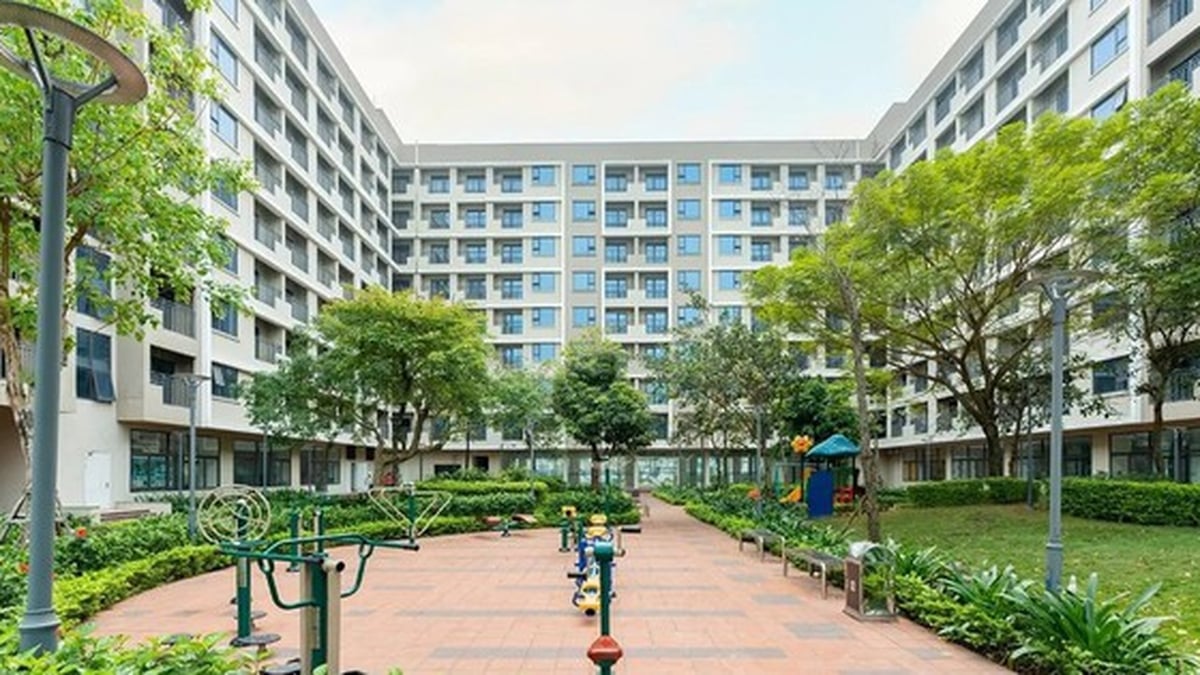"Land in the gap" has high price
"Land between gaps" is understood and described in an easy-to-understand way as a plot of land stuck between two high-rise buildings. According to many experienced investors, "land between gaps" is often located in densely populated areas and has different advantages and disadvantages.
With more than 20 years of experience in real estate investment, Mr. Duong Van Trong, in Hoang Mai district ( Hanoi ) shared that "land in the gap" is often attractive to buyers. Because this type of land is often located in densely populated areas, has full infrastructure and utilities and is scarce.
In addition, according to Mr. Trong, when building a house on "gap land", the homeowner will limit construction costs for plastering and painting the walls of adjacent houses. The homeowner also does not have to build an additional solid fence to protect the safety of his house because the area is already crowded.
"Reducing the above costs is the advantage that interspersed land brings to land buyers," Mr. Trong affirmed.

A "gap" plot of land in Thanh Tri district, Hanoi was recently put up for sale (Photo: Ha Phong).
However, according to Mr. Trong, besides the advantages, the disadvantages of "land through the gap" are not few. For example, because this land is scarce, the selling price is also quite high. Besides, the process of people building houses on "land through the gap" will easily cause many problems.
"When building between two houses, the "gap" plot of land is very likely to have a difference in area compared to the documents, because the boundary markers of the built houses can be moved. At the same time, building a house will more or less affect the two neighboring houses, easily causing the risk of having to pay compensation...", Mr. Trong cited.
According to some experienced people in construction, building a house on "slotted land" is prone to rainwater seepage at the adjacent wall. Waterproofing paint to ensure the wall is not possible.
Investors are wary of "land in the gap"
According to real estate investors, "land through the cracks" is not a "golden" plot of land. Not all investments in "land through the cracks" are profitable, and there are even cases where this type of land has been "unsold" for many years.
Sharing the same opinion with Mr. Trong, Mr. Nguyen Huy Thuc - a real estate investor in Hanoi - said that "land through the gaps" is suitable for real buyers. But for investors, "land through the gaps" is not an easy "piece of cake".
"High prices are the biggest disadvantage for investors when choosing "land in the gap". Real buyers may accept prices equal to or slightly higher than the market price, which will affect investors' profit expectations," said Mr. Thuc.

Investors are wary of "gap" land (Illustration: Ha Phong).
In addition, according to Mr. Thuc, legal factors or problems arising during the construction process on "land in the gap" are also a minus point that prevents buyers from "putting down money". And clearly, the above will affect the liquidity of this type.
"Investors often have to consider and carefully study the legal factors of "land in the gap" before deciding to invest. In particular, the area of this land must be sufficient and consistent with the Certificate of Land Use Rights, to avoid disputes and difficulties in liquidity," Mr. Thuc shared.
According to Mr. Trong and some other professional real estate investors, investing in "land in the gap" is not easy. The price level in densely populated areas will not fluctuate much and is often high.
"The owner of the "land through the gap" will offer a high price, because he thinks it is scarce here. Therefore, if investors buy at a high price, it will be very difficult to find a buyer to make a profit," said Mr. Trong.
Giving advice to buyers of "land gaps" to build houses, the above investors said that they need to carefully measure the land before buying as well as when officially building. The reason is that because the neighbors have built before, it is not possible to rule out the case that they have intentionally encroached on the land.
Next, you need to choose an experienced and reputable contractor to carry out the construction of the house. If you have more conditions, you should hire an architect to design the house so that it is most suitable for the terrain of the land as well as not affect the walls and foundations of the neighbor's house during the construction process.
Source





























![[Photo] National Assembly Chairman Tran Thanh Man visits Vietnamese Heroic Mother Ta Thi Tran](https://vphoto.vietnam.vn/thumb/1200x675/vietnam/resource/IMAGE/2025/7/20/765c0bd057dd44ad83ab89fe0255b783)








































































Comment (0)